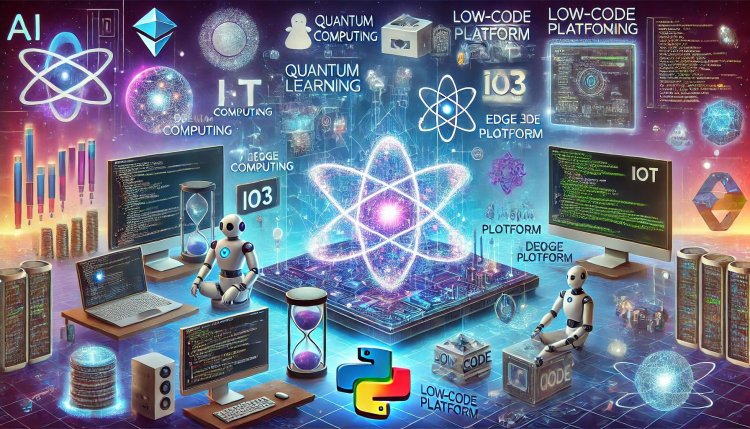What's Trending in Programming: July 2024
Explore the latest trends in the programming world for July 2024. From AI integration to quantum computing, stay updated with the newest advancements and technologies shaping the industry.

Welcome back to Programmers.Press, your go-to source for the latest news and trends in the programming world. As we move through 2024, several exciting developments and trends are shaping the landscape of programming. Let's dive into what's making waves this month.
1. AI and Machine Learning Integration
AI and Machine Learning continue to dominate the tech scene. From improving user experiences to automating mundane tasks, the integration of AI is becoming ubiquitous. Developers are increasingly focusing on:
- Natural Language Processing (NLP): Enhancing human-computer interactions.
- Computer Vision: Advancements in image and video recognition.
- Reinforcement Learning: Optimizing decision-making processes.
2. Quantum Computing
Quantum computing is no longer a distant dream. Major tech giants like IBM and Google are making significant strides, offering quantum computing as a service (QCaaS). Developers are exploring:
- Quantum Algorithms: To solve complex problems faster.
- Cryptography: Enhancing security measures.
- Quantum Machine Learning: Combining quantum computing with AI.
3. Edge Computing
With the exponential growth of IoT devices, edge computing is gaining traction. It allows data processing at the edge of the network, reducing latency and improving performance. Key areas of interest include:
- IoT Solutions: Enhancing real-time data processing capabilities.
- 5G Integration: Leveraging faster network speeds.
- Data Security: Ensuring robust security at the edge.
4. Web3 and Blockchain
Blockchain technology continues to evolve, with Web3 promising a decentralized internet. Developers are focusing on:
- Smart Contracts: Automating agreements on blockchain platforms.
- Decentralized Applications (DApps): Creating apps with enhanced security and transparency.
- NFTs: Exploring new use cases beyond digital art.
5. Low-Code and No-Code Platforms
The rise of low-code and no-code platforms is democratizing software development. These platforms allow users with minimal coding knowledge to create applications, leading to:
- Rapid Prototyping: Quickly bringing ideas to life.
- Increased Collaboration: Bridging the gap between technical and non-technical teams.
- Cost Efficiency: Reducing development time and costs.
6. Cybersecurity
With increasing cyber threats, cybersecurity remains a top priority. Developers are focusing on:
- Zero Trust Architecture: Ensuring no implicit trust within the network.
- AI-Driven Security: Using AI to detect and respond to threats.
- Blockchain Security: Leveraging blockchain for secure transactions and data integrity.
7. Programming Languages
Several programming languages are gaining popularity due to their versatility and performance:
- Python: Continues to be a favorite for AI and data science.
- Rust: Known for its safety and performance, especially in system-level programming.
- Go: Gaining traction for its efficiency and concurrency support.
8. Remote Work Tools
The shift to remote work has led to the development of new tools and platforms to support distributed teams. Trends include:
- Collaboration Tools: Enhanced features for remote teamwork.
- Virtual Offices: Creating immersive remote work environments.
- Productivity Tools: Tools to boost productivity and maintain work-life balance.
Conclusion
The programming landscape is continuously evolving, driven by technological advancements and changing work environments. Staying updated with these trends is crucial for developers to remain competitive and innovative. Keep following Programmers.Press for the latest updates and insights in the world of programming.











